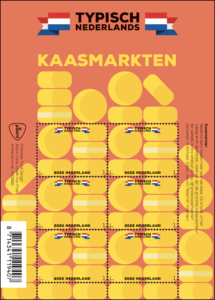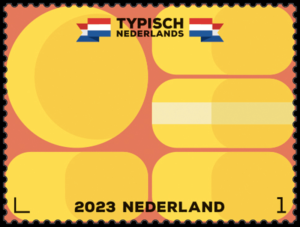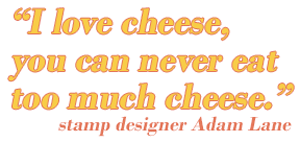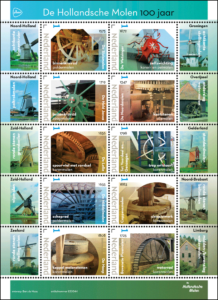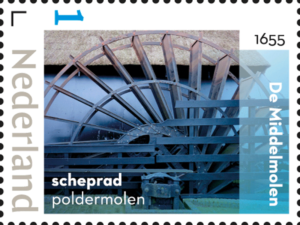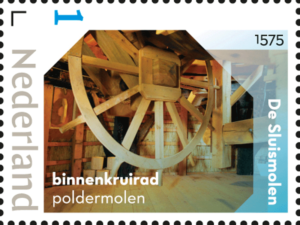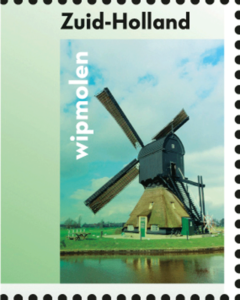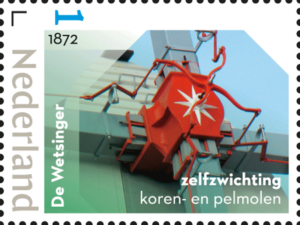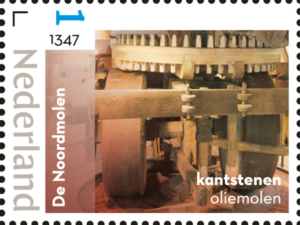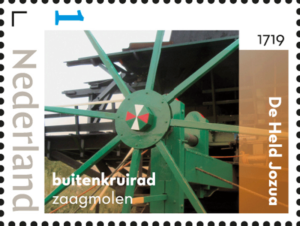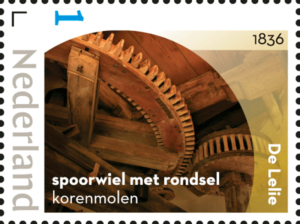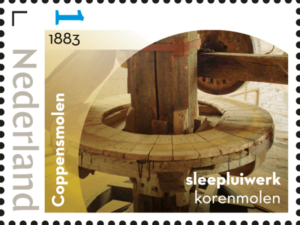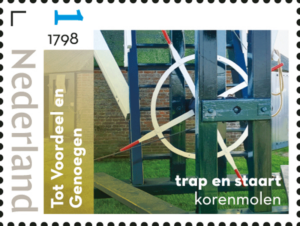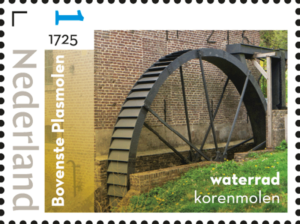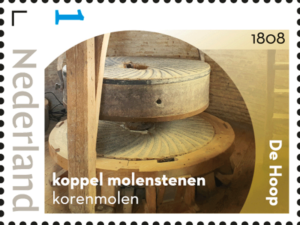Issue Date: 6 May, 2023
by Danforth Guy
Special to The Virtual Stamp Club
Canada now has a definitive stamp for the coronation of King Charles III, the monarch of 15 countries, including Canada. A recent poll showed 60% of Canadians do not wish to  acknowledge him as king of this country (66% oppose his wife Camilla as “queen of Canada”). Nevertheless, the postal service appears to feel compelled to picture him on a stamp, even though no rule or law requires it.
acknowledge him as king of this country (66% oppose his wife Camilla as “queen of Canada”). Nevertheless, the postal service appears to feel compelled to picture him on a stamp, even though no rule or law requires it.
The self-adhesive comes in a booklet of 10, denominated at the “P” (Permanent) rate, currently 92¢, which covers domestic mail up to 30g. The stamp names the monarch, a departure from most previous definitives that pictured a sovereign. The photo was taken by Alan Shawcross, apparently in London, UK, and apparently in 2007. (Click on this link to see the original photo.)
No Canadian has ever been honoured on a first-class definitive, just British monarchs. This issue continues that tradition.
Updated May 6:
[press release] [click on any of the pictures for larger versions]
Canada Post issues first Canadian stamp featuring His Majesty King Charles III as Monarch
New definitive stamp continues more than 170 years of historic tradition
OTTAWA – Today, Canada Post unveiled Canada’s first definitive stamp featuring His Majesty King Charles III at the Canadian ceremony marking the Coronation of the new  monarch, hosted by Canadian Heritage.This is the first time His Majesty King Charles III has appeared on the Canadian stamp.
monarch, hosted by Canadian Heritage.This is the first time His Majesty King Charles III has appeared on the Canadian stamp.
The stamp continues Canada Post’s long-standing tradition of issuing definitive stamps depicting the Canadian sovereign, dating back more than 170 years. This tradition first begun in 1851 with a pre-Confederation stamp featuring Queen Victoria, the King’s great-great-great grandmother.
On September 8, 2022, His Majesty ascended the throne upon the passing of his mother, Queen Elizabeth II. The King has been the heir apparent since 1951, and was created Prince of Wales by Queen Elizabeth II 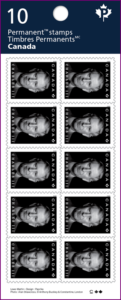 when he was nine years old. Since His Majesty’s first official tour of Canada in 1970, he has returned numerous times with his most recent trip in 2022 as part of Queen Elizabeth II’s platinum jubilee celebrations.
when he was nine years old. Since His Majesty’s first official tour of Canada in 1970, he has returned numerous times with his most recent trip in 2022 as part of Queen Elizabeth II’s platinum jubilee celebrations.
The definitive stamp was designed by Paprika, and features a portrait of His Majesty King Charles III, then The Prince of Wales, by photographer Alan Shawcross. Printed by Lowe-Martin, the issue includes a booklet of 10 Permanent™ domestic rate stamps and an Official First Day Cover [below]. The Official First Day Cover features a photograph of His Majesty in Ottawa during the 2022 Royal Tour, when he was The Prince of Wales. The photo on the Official First Day Cover was taken by Canadian photographer Justin Tang. The cancel site is Ottawa, Ontario. The stamp will be issued on Monday, May 8, 2023.  A definitive stamp is a postage stamp that is part of a regular issue of stamps, designed to serve the everyday needs and issued in indefinite quantities. A commemorative stamp celebrates a special place, event, person, theme or theme, often issued on a significant date. Unlike a definitive stamp which is reprinted for general usage, a commemorative stamp is printed in a limited quantities and is available until stamps run out.
A definitive stamp is a postage stamp that is part of a regular issue of stamps, designed to serve the everyday needs and issued in indefinite quantities. A commemorative stamp celebrates a special place, event, person, theme or theme, often issued on a significant date. Unlike a definitive stamp which is reprinted for general usage, a commemorative stamp is printed in a limited quantities and is available until stamps run out.
The new stamp and collectibles will be available at canadapost.ca and postal outlets across Canada.
[en Francais pour les médias d’information]
Postes Canada émet le premier timbre canadien à l’effigie de Sa Majesté le roi Charles III
Le nouveau timbre courant perpétue une tradition de plus de 170 ans
OTTAWA – Aujourd’hui, Postes Canada a dévoilé son tout premier timbre courant à l’effigie de Sa Majesté le roi Charles III à l’occasion de la cérémonie organisée par  Patrimoine canadien en l’honneur du couronnement du nouveau monarque.
Patrimoine canadien en l’honneur du couronnement du nouveau monarque.
Cette émission perpétue une longue tradition de production de timbres courants présentant le souverain canadien, qui a commencé avant la confédération, en 1851, il y a plus de 170 ans, par une vignette consacrée à la reine Victoria, l’arrière-arrière-grand-mère du Roi.
Le 8 septembre 2022, Sa Majesté a accédé au trône après le décès de sa mère, la reine Elizabeth II. Héritier apparent depuis 1951, il a été fait prince de Galles par la Reine à l’âge de neuf ans. Après sa première visite officielle au Canada en 1970, Sa Majesté y est  revenue à plusieurs reprises, notamment en 2022 dans le cadre des célébrations du jubilé de platine de la reine Elizabeth II.
revenue à plusieurs reprises, notamment en 2022 dans le cadre des célébrations du jubilé de platine de la reine Elizabeth II.
Le timbre courant a été conçu par la maison Paprika et présente un portrait de Sa Majesté le roi Charles III, alors prince de Galles, réalisé par le photographe Alan Shawcross. Imprimée par Lowe-Martin, l’émission comprend un carnet de 10 timbres PermanentsMC au tarif du régime intérieur et un pli Premier Jour officiel. Le pli Premier Jour est orné d’une photo de Sa Majesté prise à Ottawa par le photographe canadien Justin Tang lors de la visite royale de 2022, alors qu’il était le prince de Galles. Le lieu d’oblitération est Ottawa, en Ontario. Le timbre sera émis le lundi 8 mai 2023.  Un timbre courant fait partie d’une émission régulière. Produit en quantités indéfinies, il est conçu pour répondre aux besoins quotidiens. Un timbre commémoratif, souvent émis à une date significative, met en vedette un lieu, un événement, une personne ou un thème spécial. Contrairement au timbre courant, qui est réimprimé pour un usage général, un timbre commémoratif est produit en quantités limitées et offert jusqu’à épuisement des stocks.
Un timbre courant fait partie d’une émission régulière. Produit en quantités indéfinies, il est conçu pour répondre aux besoins quotidiens. Un timbre commémoratif, souvent émis à une date significative, met en vedette un lieu, un événement, une personne ou un thème spécial. Contrairement au timbre courant, qui est réimprimé pour un usage général, un timbre commémoratif est produit en quantités limitées et offert jusqu’à épuisement des stocks.
Le timbre et les articles de collection seront en vente sur postescanada.ca et dans les comptoirs postaux partout au pays.

